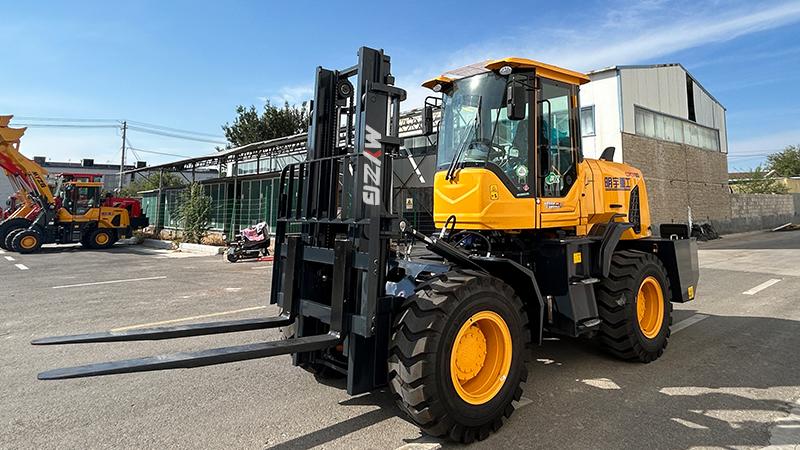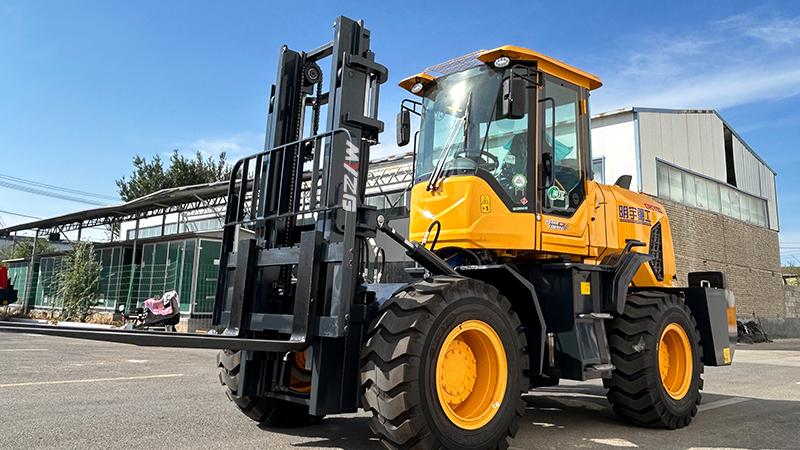The choice between articulated and standard off-road forklifts for forestry and logging operations represents a critical decision that can significantly impact productivity, operational efficiency, and workplace safety in challenging forest environments. Both machine types offer distinct advantages and limitations when handling logs, navigating uneven terrain, and operating in confined forest spaces, making the selection process highly dependent on specific operational requirements and site conditions. This comprehensive examination explores the technical specifications, performance characteristics, and practical applications of both articulated and standard forklifts in logging scenarios, providing forestry professionals with the detailed information needed to make informed equipment decisions.
Articulated off-road forklifts have gained considerable popularity in forestry applications due to their exceptional maneuverability in tight spaces and superior performance on uneven terrain. The unique pivot-point design allows the front and rear sections of the vehicle to articulate independently, enabling these machines to maintain stability on slopes and rough ground while providing precise load placement capabilities. Forestry-specific articulated models typically feature reinforced chassis construction, specialized log grapples or clamps, and elevated ground clearance to navigate stumps, roots, and other forest floor obstacles. The articulation joint offers particular advantages when working on hillsides or navigating between trees, as the machine can adjust its configuration to maintain balance while transporting heavy loads of logs. Many modern articulated forestry forklifts incorporate advanced hydraulic systems that automatically adjust pressure and flow based on load requirements, along with sophisticated stability control systems that monitor load distribution and terrain angle to prevent tip-over accidents.

Standard rigid-frame off-road forklifts remain a common sight in logging operations, valued for their straightforward design, typically higher load capacities, and often lower maintenance requirements compared to articulated models. These machines excel in more open logging areas where their fixed-frame stability provides excellent load-bearing capabilities for stacked logs. The traditional forklift configuration with a rigid chassis and rear-wheel steering offers predictable handling characteristics that many experienced operators prefer, especially when working with exceptionally heavy or lengthy log loads. Modern standard forestry forklifts incorporate numerous specialized features including log-protecting fork designs, enhanced counterweight systems for heavy loads, and forestry-specific tires that provide excellent traction in muddy or snowy conditions. Many models now feature enclosed cabs with advanced filtration systems to protect operators from sawdust and other airborne particulates common in logging environments, along with improved visibility features specifically designed for timber handling applications.

Terrain adaptability represents one of the most significant differentiators between articulated and standard off-road forklifts in forestry settings. Articulated models demonstrate clear advantages in steep or highly irregular terrain commonly found in forest operations, with their ability to maintain full wheel contact with the ground even when navigating over stumps, rocks, or significant grade changes. The independent movement of front and rear sections allows these machines to distribute weight more effectively across uneven surfaces, reducing ground pressure and minimizing soil disturbance - an important consideration in sustainable forestry operations. Standard forklifts, while generally limited to less extreme terrain, often provide better stability on flat or gently sloping ground where their rigid frame construction offers a more stable platform for high lifting with heavy log loads. Many logging operations find value in maintaining both machine types, deploying articulated units for initial extraction from rough terrain and standard models for final stacking and loading operations in more prepared landing areas.
Post time:Aug.14.2025

